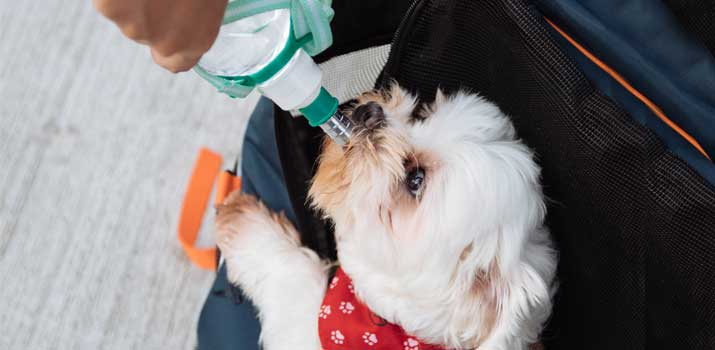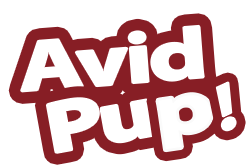
For most new puppy owners, millions of questions are whirling around in their brains. Am I choosing the right food? Is my pup’s training going well? Are they happy?
Those questions are all perfectly normal!
All you want is to raise a happy and healthy puppy. Asking those all-important queries can help you prepare for anything! While most new puppy issues are pretty easy to figure out,
there’s one topic that’s often shrouded in mystery: Water intake!
When you’re potty training a new puppy, there’s a delicate balance between offering up too much water and not enough.
Both over-hydration and dehydration are real issues.
So, how much water should a puppy drink during the potty training phase? The answer depends on your dog.
Determining Healthy Water Intake
There’s no hard and fast rule as to how much water your puppy should be drinking. However, we can use some general guidelines to get a better idea of what’s healthy.
On any typical day with moderate exercise and play, your puppy should be drinking 0.5 to 1.0 ounces of water for every pound of body weight.
Let’s say, for example, that you have a 10-pound puppy. They should be drinking five to 10 ounces of water to stay well-hydrated and healthy.
Now, puppies grow up fast. Many will multiply in size in only a couple of months.
To stay on top of their ever-changing needs, you need to weigh them regularly and adjust accordingly.
We recommend splitting up the water volume to ensure that your pup is staying hydrated throughout the day.
Instead of simply refilling their bowl, measure it out and let them lap every last drop!
Potential Factors That Come Into Play
Of course, all dogs are different! Not only that, but every day has a brand-new adventure!
While 0.5 to 1.0 ounces per pound is the norm, your dog might drink more or less.
Here are some important factors that could impact your dog’s water intake as they potty train.
Weaning
When dogs wean off their mother’s milk, they tend to drink a bit more water than usual.
They’re transitioning from a pure liquid diet to solid foods.
Extra water helps to ease the development a bit. Not only does it help them adjust mentally, but it can also lighten the load on the gastrointestinal system.
Related: When Do Puppies Start Drinking Water & Eating Food.
High Activity Levels
Did your puppy go for a long run on a hot day?
There’s a good chance that they’ll want to drink nearly double their daily allowance.
While you can provide a little more on those particularly active days, there are some other things you can do to cool your pup off.
Consider putting some ice cubes in their water. The cubes are something they can chew on while cooling off.
Food
Dogs that eat canned foods tend to drink less water. Why is that?
Well, canned food has much higher water content. Some brands have products that are as much as 80 percent water!
They’re staying hydrated with the food, so excess water is not a necessity.
Medication
If your vet puts your dog on certain medications, they may end up drinking a lot more water.
Diuretics cause the body to release excess fluids. It triggers urination, which can be a messy situation for a potty training pup.
Follow your vet’s recommendations here. Typically, the extra drinks of water are a good thing to help the medication work its magic.
Illness
Finally, your dog could succumb to illnesses that call for more hydration. Dogs can become dehydrated pretty quickly when they experience bouts of diarrhea or fever.
Most vets will recommend that you make as much water as needed available. Otherwise, they may come down with symptoms of dehydration.
What’s Wrong with Too Much Water?
For many owners, the go-to is to make and an endless supply of water readily available for dogs.
Water is an important thing to have, and amply hydration is necessary for good health. So, why should you control your puppy’s intake?
The biggest issue comes down to the potty training cycle itself.
Puppies must learn to control their bladders while understanding where they should do their business.
As they grow, the bladder is already pretty weak and uncontrollable. Young canines just don’t have the means to control urination like adult dogs.
Providing an infinite source of water will only exacerbate the issue.
Your pup will never learn how to hold things in. Instead, they’ll have frequent accidents that only set training techniques back.
Limiting water makes things more manageable for you and your dog.
Your pup won’t fill their bladder every time they have access to water, which leads to fewer accidents and better learning!
Excess hydration could also be a sign that there’s something more nefarious underfoot.
Over-drinking could be a sign of potential health issues. So, we recommend bringing your pup to a vet if their urge to drink becomes stronger than expected.
Related: 7 Best Dog Urine Carpet Cleaners, removes stains & odors
Signs of Dehydration
In most cases, healthy puppies will have no problem lapping up their daily water requirements. But what if your canine companion starts ignoring that supply of water?
Dehydration is a severe problem that you should not take lightly.
Not only could it affect their health moving forward, but dehydration could be a sign of serious health problems that are already plaguing your dog.
Keep an eye on your pup’s water intake. If you suspect that they might be dehydrated, there are a couple of tests you can perform.
Shoulder Skin
Interestingly enough, the skin on your dog’s shoulders says a lot about the hydration going on inside.
Grab the shoulder skin and lightly pull it back. Then, release it, and pay attention to how long it takes to bounce back.
If it’s slow to return, your dog could be close to the danger zone for dehydration.
Skin usually reacts differently when dehydration levels are at seven to eight percent. Things get dangerous at 10 percent, so it’s important to act fast.
The Gum Test
Another test you can do involves the gums. In this examination, you see how long the capillaries take to refill with blood. Press your finger on the gums.
The spot you press should turn white in two seconds. After you release it, the gums should go back to the standard pink color just as fast.
If it takes any longer, you’re looking at a serious dehydration problem.
Treating dehydration is paramount. Don’t rely on a bowl of water alone to address the situation.
If your dog is already ignoring their water bowl, you’ll need to try other hydration methods.
Take a trip to the vet for a professional examination. Vets will usually provide IV fluids to hydrate your dog.
In the meantime, they’ll figure out the root cause of the issue and try to find a solution to restore your pup’s health.
Conclusion
Water intake isn’t something that you have to control as an adult. Once puppies are out of the potty training phase, they’re more capable of managing their bladders.
As a result, they can drink however much they please!
But until then, make sure to keep track of what your puppy is drinking. Finding the right balance of hydration can make the potty training process worlds easier!
Also Read: Is it a Good Idea to Use Puppy Diapers during Potty Training?

